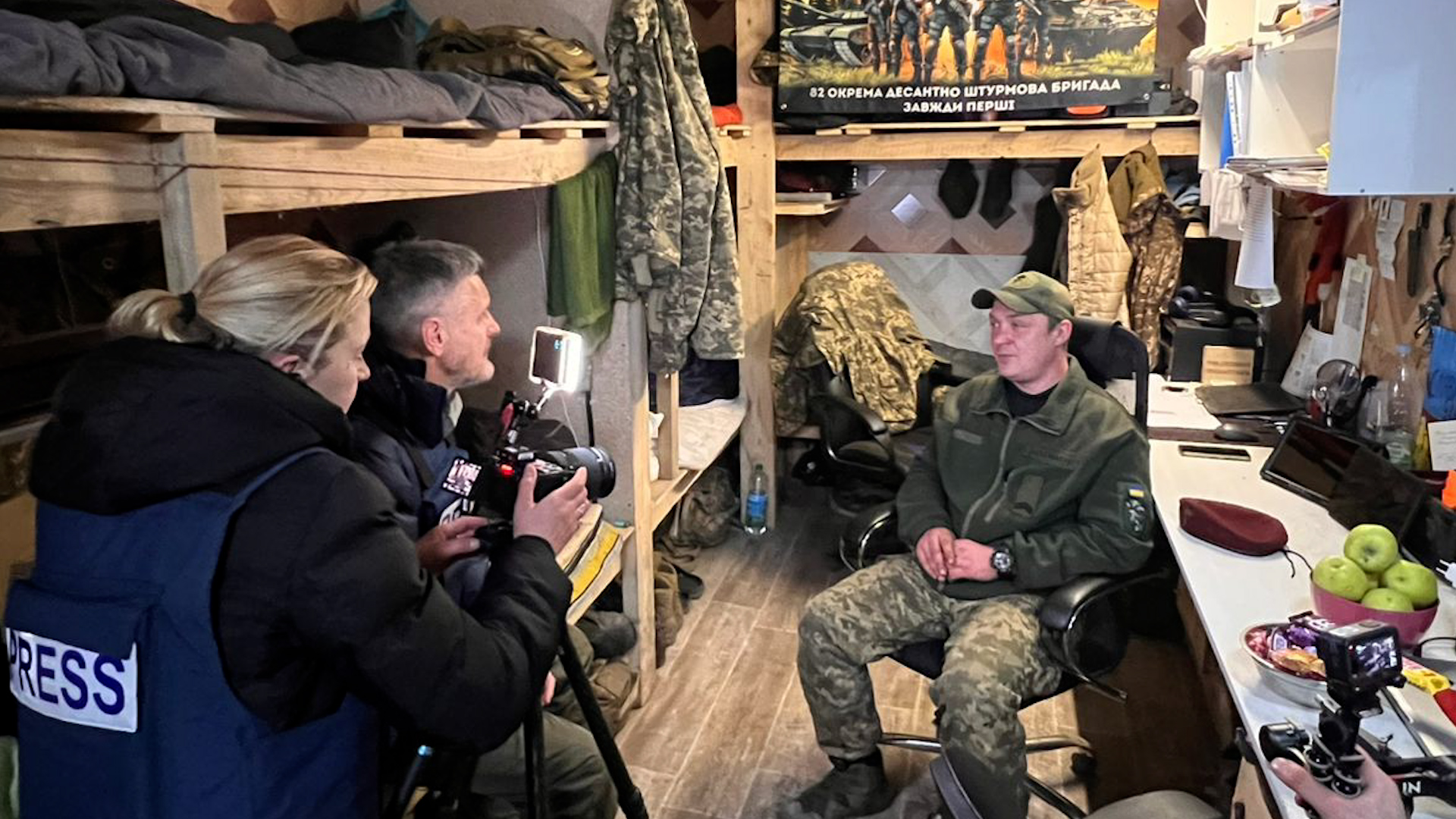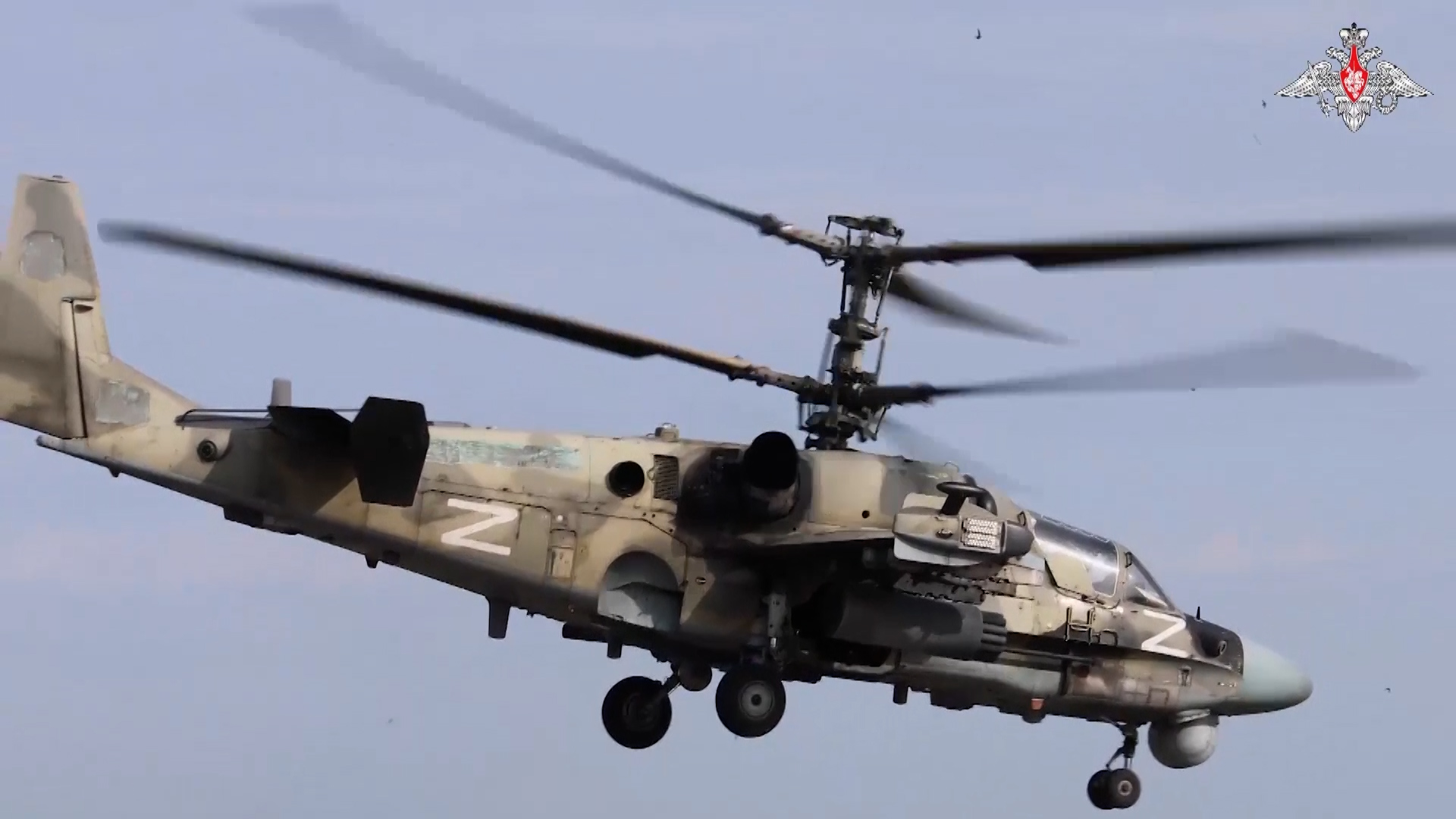Spotlight shone on the Ukrainian airborne soldiers who fought their way into Kursk
Simon Newton and Hannah King report from the frontline in eastern Ukraine
When Ukrainian paratroopers burst across the Russian border last summer and seized huge swathes of territory, one unit came to prominence.
Initially, no one was sure if the 82nd Air Assault Brigade existed, with speculation it was a phantom brigade – a feint to hide the real whereabouts of British and US equipment supplied to Kyiv.
It was in 2023 that the elite unit first came to light as Ukraine launched its counteroffensive in Zaphorizhzhia.
More recently it spearheaded Ukraine's cross-border assault into Kursk, with social media footage showing these paratroopers entering Russia supported by their brigade's Challenger 2 tanks.
As well as taking the name of the famous US Airborne Division, the 82nd also wears the familiar maroon berets of airborne units, like Britain's Parachute Regiment.
For obvious reasons, we were not told exactly where we were meeting them, and as we were driven at speed inside an American Stryker infantry fighting vehicle there was no way of us even knowing.
We ended up at one of the brigade's rear staging areas which they use to rotate troops in and out of Kursk.
In the distance, we could hear the thud of outgoing Ukrainian artillery.
Here, inside a deep but surprisingly well-appointed dugout, is one of the brigade's command centres.
A wood burner crackles away in the corner and on the wall hang heroic brigade banners, alongside drawings sent by their children.
Propped up on their bunks, never far away, are the soldiers' automatic weapons, body armour and helmets.
Inside we meet 34-year-old Ihor. The former supermarket manager is now a sergeant and was one of the first troops from this brigade to cross the border.
"I went into Kursk as a detachment commander," he explained. "I was in the first group, in the first armoured vehicle.
"We were anxious, of course, but then the gunner told us we'd already crossed the border.
"The worry then turned to adrenaline, we just wanted to move further and further forward."
Ihor says his troops were only told where they were going a few hours before they stepped off.
"To be honest though, we'd all guessed something was happening," he said.
"We had a real confidence knowing that we were attacking them on their own land – and we're still doing it now."
Ihor proudly shows me some treasured drawings, sent by his two young daughters.
Even without translation, you can tell the love he has for his young family.
His wife, he tells me, also works for the brigade.
Along with pictures of their dad, his girls have also penned a rather evil caricature of Vladimir Putin.
Even though none of these soldiers speak English – they do seem to know one fruity British slang word to describe the Russian President.

Back above ground, we are given a quick tour of the camp.
A group of dogs run up and greet us, with the soldiers explaining they rescued them during their offensive in Zaphorizhzhia last year.
"Ukrainians don't leave animals behind," our interpreter says. "The Russians do, they don't care."
In the cookhouse large chunks of pork bubbled away on the stove while in a corner a soldier peeled onions.
Nearby are neatly arranged rows of spices and bowls of diced vegetables.
When I ask what is for dinner, they struggle to translate the meal.
From what I can see though, the main ingredients seem to be potatoes and huge amounts of garlic.
To save on generator fuel, and presumably to reduce the chances of the camp being spotted from the air, the cooks prepare food using just the light of a head torch.

Showing us around is 27-year-old Ivan.
Originally from Kyiv, he is well known in the brigade for downing a Russian helicopter.
"It was the third day of our raid into Kursk," he explained. "We were dug in, and we could hear helicopters.
"Our commander came out and said 'watch the helicopter carefully and when you see it on the horizon, destroy it'.
"It was the first time I'd ever fired a Stinger missile."
Mobile phone footage showed the missile streaking toward the helicopter's tail.
As it explodes the Ka-52 Alligator spirals toward the ground.
"I didn't even see it hit the helicopter, and I was asking the guys if I got it.
"They were congratulating me, shouting, they were so happy – probably even happier than me!"
Before we leave, Ihor proudly tells me his unit spent 35 days holding off a Russian counterattack in Kursk.
They pushed further into Russia than any other company in the brigade, he says.
"You must all be really tired now, after three years of fighting?" I ask as Ihor looks exhausted.
Sleep deprivation is a problem for all Ukrainian units on the frontline, with the constant tempo of Russia's "meat grinder" assaults making it hard to get any rest.
Ihor tells me that civilians, under constant Russian air raids, are tired, but not his troops.
"No, there is no tiredness," he stoically says, through red eyes.
"We will be tired when we win. The entire staff believe the same. Right now, we don't have time to be tired."









